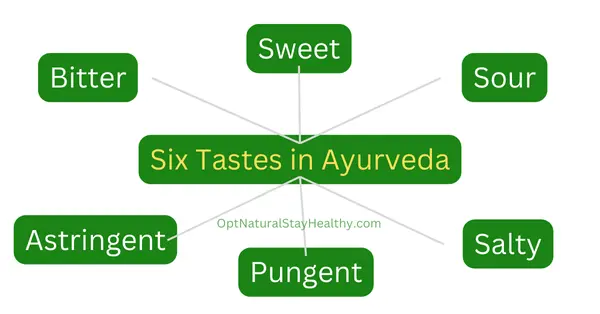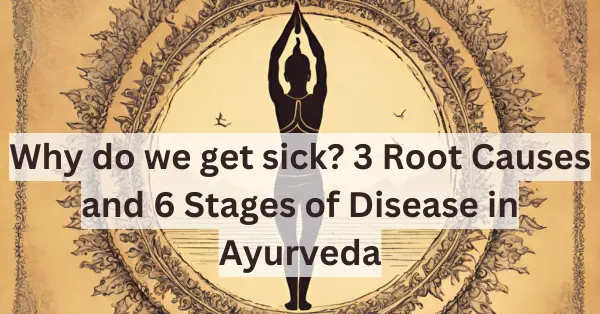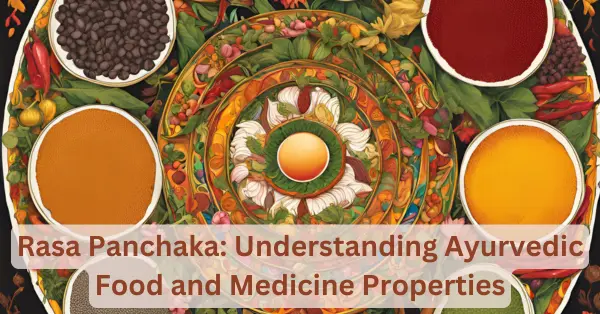What is Mindful eating in Ayurveda?
The practice of mindful eating involves being present when eating, focusing on the food’s flavour, texture, aroma, appearance, and your body’s cues about hunger and fullness. This method improves digestion and discourages overeating by encouraging a positive relationship with food.
As per Ayurveda, “How we eat” becomes more important than “What we eat“.
Eating Hitakara aahara (~health-promoting food) is known as being a “Hitashee.”[1]
Benefits of Mindful Eating
Making simple changes in the way we eat food and following Ayurvedic mindful eating can help-
1. To improve digestion
2. Prevent overeating
3. Prevent toxic build-up.
Steps for Mindful Eating in Ayurveda
1. Deep Breaths
Take deep breaths before meals and offer prayer with a sense of gratitude. It is to calm the mind.
2. A Calm Environment for Eating
Eat in a calm, peaceful environment. Eating in a chaotic environment puts our minds in a similar state, and we eat very fast without chewing properly. This leads to indigestion, gas, and bloating.
3. Eat only when you are hungry
Hunger shows that the body has digested the previous meal and is ready to digest the next meal. Heaviness, lethargy, and indigestion are the symptoms we will experience after a meal if we eat when we are not hungry.
4. Don’t eat if your mind is not settled.
If you are upset or angry, you won’t be able to digest the food properly. Eating when your mind is in a negative state converts the food into toxins.
5. Sit in one place while eating.
Eating while moving or standing interrupts proper digestion, as the movement of the blood is obstructed to the stomach. Blood helps in digestion.
6. Eat warm and freshly cooked food.
It eases the digestion process. The warm food complements the digestive fire’s hot nature.
7. Likewise, avoid cold food and drinks.
It will reduce the digestive power by pacifying the Agni. Food stored in the refrigerator becomes very heavy to digest.
8. Use all five senses while eating.
Take time to appreciate the food’s smell, colour, and taste. Your mind should also be satisfied with food after eating.
9. Pay attention to your system while eating
Stop eating before you feel full. Ayurveda recommends having your stomach half full with food, a quarter with Water, and the last quarter empty for digestive actions. The image below shows just that.
10. Eat food at a moderate pace and chew food properly
It reduces the bloating and heaviness after eating. Chewing properly makes it easier for agni, or digestive fire, to digest food. Chewing one morsel 32 times is ideal.
11. Avoid frequent snacking between meals.
It will result in indigestion, over-eating, and excess weight gain.
12. The order of eating food according to taste is important in Ayurveda.
Opposite to the popular notion of eating dessert after a meal. Ayurveda recommends eating in the order: Sweet-Sour-Salty-Pungent-Bitter-Astringent. It is because sweet is heavier to digest than salty, and so on.
13. Avoid artificially flavoured and processed foods.
These foods are hard to digest and are the root cause of all the indigestion problems.
14. Include all six tastes in your diet.
It makes a balanced and healthy meal. All six tastes are shown below.
15. Lunch should be the biggest meal of the day.
Digestive fire is at its peak during this hour of the day. This is the right time to eat a stomach full of good food.
16. Dinner should be early, light, and easily digestible.
You should gradually reduce your heavy food intake as the sun goes down. This is because the digestive fire becomes weak after sunset.
17. Sit for a few minutes after each meal.
This allows the body to pay attention to digestion (blood moving to the stomach) before moving on to the next activity. 15-20 of doing nothing is ideal.
18. Sit in Vajrasana after eating food.
It improves blood flow to the digestive system. It helps relieve constipation. It also strengthens the muscles of the lower back, legs, and thighs.
19. Taking a short walk after meals
A short walk after a little time after meals facilitates digestion. 100 steps should do the job. Long, strenuous walks should be avoided after meals.
20. Lying down on the left side after meals
The stomach and pancreas are located on the left side. It helps to stimulate digestion as there is more blood if you lie on the left side. Yes, blood helps in digestion.
21. Eat according to your Dosha
Ayurveda has three energy principles or Doshas. Vata Dosha, Pitta Dosha, and Kapha Dosha. Every individual has their dosha dominating. You must have your dietary intake according to your dosha.
22. Eat according to the seasons
You must keep your Dosha in mind and eat food that suits you according to each season. Winters favour soups and warm foods. Summer offers a lot of foods with a cooling nature, like cucumber and melons.
Moreover,
- Proper functioning of Agni or digestive fire is the key to good digestion and health.
- Eating while using media, i.e. TV, phone, etc., makes our agni do two things simultaneously. Agni also has to digest thoughts that come into our minds.
- Eat food silently without thinking of anything for the best functioning of the digestive fire. This is the ideal condition.
Conclusion
Steps to mindful eating are simple and gentle, yet it will take practice and time to become a conscious habit. Mindful eating enables us to experience greater pleasure and nourishment from food.
Mindful eating (i.e., paying attention to our food, on purpose, moment by moment, without judgment) is an approach to food that focuses on individuals’ sensual awareness of the food and their experience of the food.[2]
Reference
[1] Kothavale SS, Sharma APV. Vaidya Saadhana – Healthy dietary behaviour: A powerful tool for health promotion and disease prevention. Int J Ayurveda Res [Internet]. 2024 Jan–Mar;5(1):53-55. Available from: Link to Study. <Go to Citation>
[2] Nelson JB. Mindful Eating: The Art of Presence While You Eat. Diabetes Spectr [Internet]. 2017 Aug;30(3):171–174. Available from: Link to Study. <Go to Citation>





